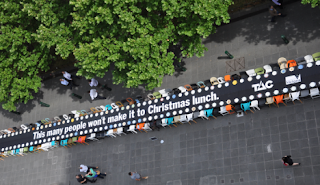Despite the name, creating a good experience with
experiential marketing can be difficult. A great quote on experiential marketing – “Anyone
can throw up a tent in a high-traffic area and harass the general public, but
what does it take to pull off an effective experiential event? A television
commercial can easily be muted and ignored, but try ignoring a purring,
squirming cat in your arms.”
Looking to the building blocks of experiential, we dig back
to a process known as ELT – Experiential Learning Theory – which presents a
holistic model of the learning process, as well as a multi-linear model of
adult development. Don’t be dazzled by the fancy terminology, essentially what
they are getting at is that, in general, people learn better by doing.
This is where experiential comes to the fore. As it’s been
known in direct sales circles for many years, the best way to convince someone
to buy your product is to put said product in their hands. Again, we can flip
channel on the radio or mute a TV when an ad appears, but when someone offers
us a seat in a busy shopping centre and a free coffee?
Nescafe Café Menu coffee is bringing this to life, with a
pop-up home café appearing across major shopping centres on the east coast of
Australia, giving busy shoppers a place to relax and sample the range of
Nescafe Café Menu. But it does not have to stay within the realms of retail.
A chilling experiential campaign came from the Transport
Accident Commission in Melbourne last year. The TAC, wanting to increase
awareness of the road toll in Victoria so far that year, set up a 60-metre long
table with a place setting for every person who had lost their life on the
road. They began with 257 places, and ended up setting 262.
But how do we creative an experiential event that delivers
tangible results, be it in sales, samples, or shareability? The tent on Martin
Place, set up to harry and annoy random passers-by is no longer the benchmark
and we as a business should look to what sort of interactivity our customers
want from our products and brands.
The other big question (for retailers specifically), is how
do we take the in-store experience and translate that to another venue? We know
our consumers’ path to purchase, from research, in-store movements, and beyond,
and the data we can take from that can work in tandem with the in-hand
experience of an off-site event.
What it means for us: Experiential
marketing is a great game changer for new brands breaking into the marketplace,
as well as established brands looking to refresh their image. A chance to get
the product into the hands of consumers is nothing to be sneezed at, and it
gives people a chance to experience the brand in a controlled, measurable
setting. This sort of experience can be invaluable across the different parts
of the Woolworths business, and increase the connection between brand and
consumer beyond that of the in-store experience.



